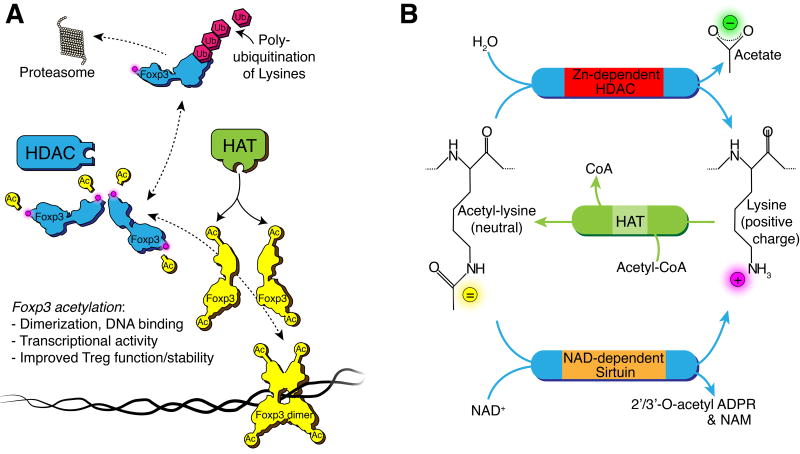Figure 1. HDAC reaction and Foxp3.
(A) Lysine deacetylation renders the Foxp3 transcriptionally inactive and prone to poly-ubiquitination and proteasomal degradation. (B) Lysine deacetylation reaction by Zn2+ and NAD+ dependent HDACs and acetylation by HATs. The deacetylation reaction removes acetate from the ε-amino group, changing the polarity of the lysine side chain from neutral to a positive charge, and altering the properties of the client protein. HATs catalyze the reverse of this reaction and acetylate the ε-amino group. Abbreviations: NAD, nicotinamide adenine dinucleotide; NAM, nicotinamide; ADPR, adenosine diphosphate riboside; Ub, ubiquitin; Ac, acetate or acetyl-group; CoA, Coenzyme A; HAT, histone acetyl-transferase.

